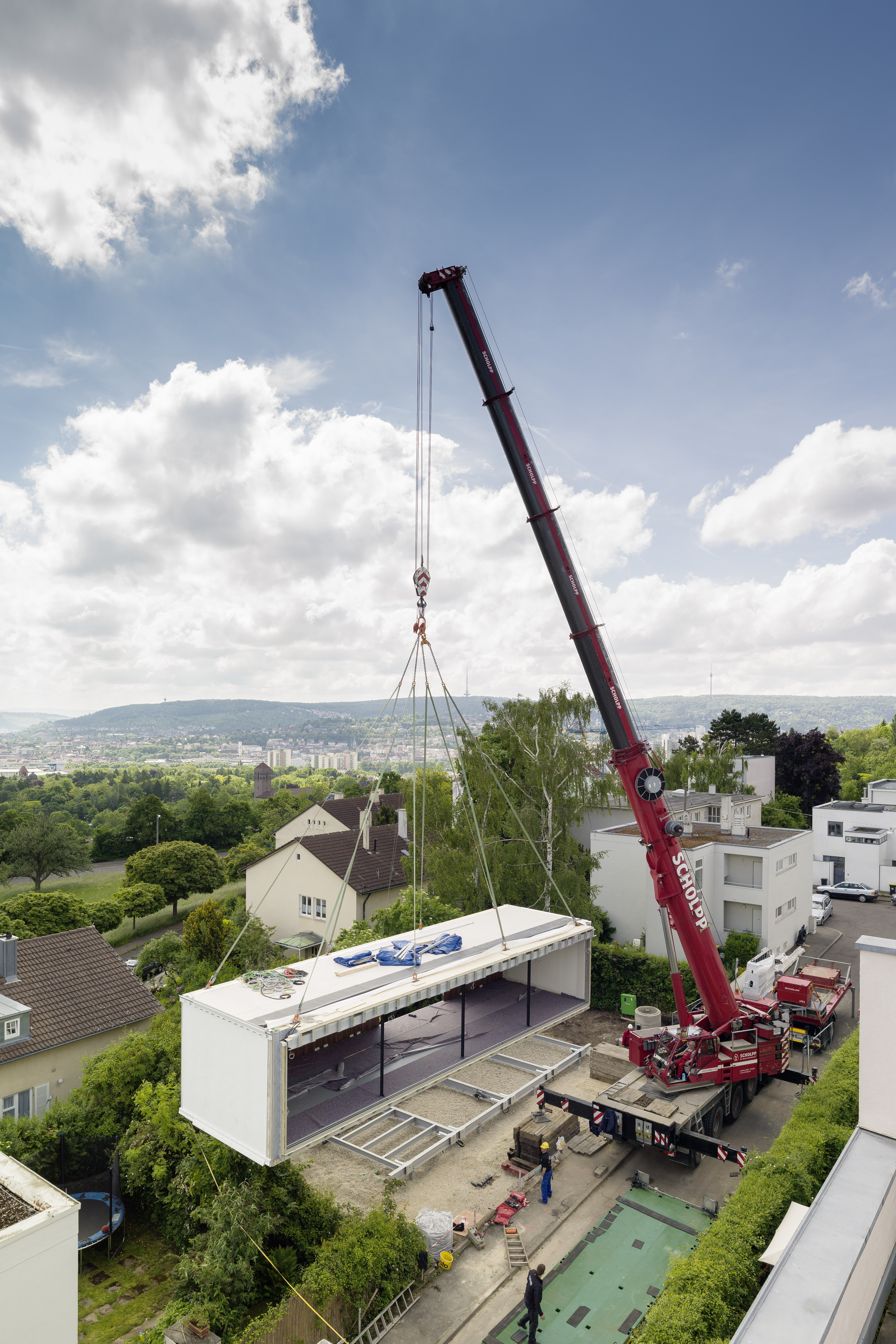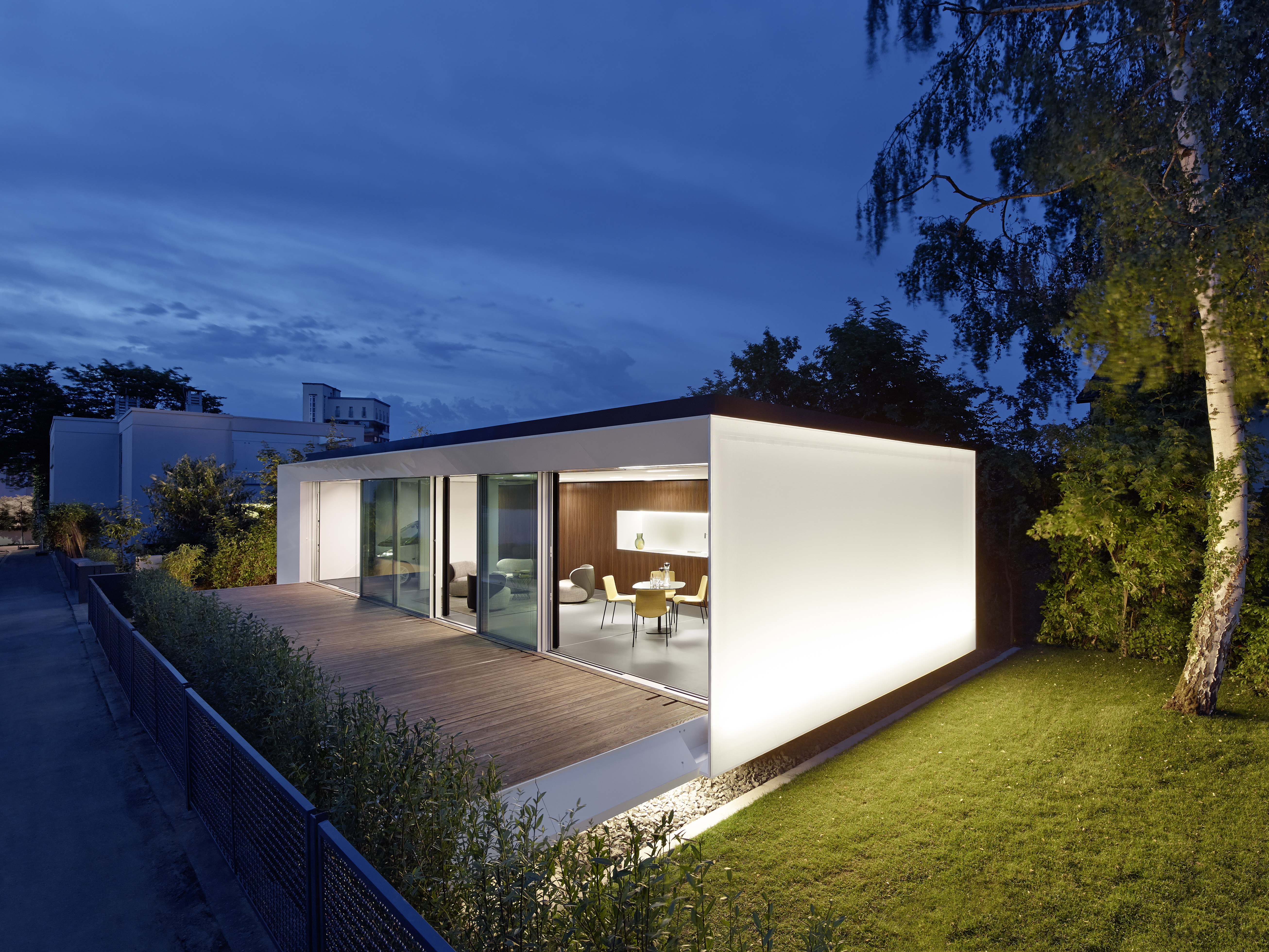By James Carson
Earlier this year, we looked at a style of building known as Passivhaus, which is playing an important role in creating energy-efficient homes. Now, another concept – the Aktivhaus – is taking this approach even further, graduating from energy-saving to energy-generating homes.
The Aktivhaus concept
Like Passivhaus, the Aktivhaus has its origins in Germany. Stuttgart-based architect Werner Sobek defines Aktivhaus buildings as those which:
- offset their annual total energy consumption in a sustainable manner;
- anticipate and react accordingly to relevant changes both inside and outside the house;
- continuously measure and optimise all energy streams.
Sobek’s idea has been realised in the form of a building called B10. This prototype Aktivhaus – prefabricated offsite and assembled in a single day – is located at the Weissenhof settlement in Stuttgart. It’s an appropriate site for applying a revolutionary concept – in 1927 the Weissenhof estate hosted a housing exhibition that included designs by leading lights in modern architecture, such as Le Corbusier and Ludwig Mies van der Rohe.
The Aktivhaus enacted
On the face of it, B10 is an 85 square-metre box with a full-length window. But its sophisticated design means the Aktivhaus can generate twice as much electric power from sustainable energy sources as it consumes. This means it can not only satisfy its own electricity needs, but can also power two electric cars and a neighbouring house built by Le Corbusier for the 1927 exhibition.
The ‘active’ element in the Aktivhaus is a mini computer, connected to the internet, that monitors weather forecasts and enables the house to respond accordingly, with different rooms heated or cooled at different times of the day. Other elements include a highly efficient heating system, web app-operated functions to control lighting and window blinds, and 17mm thick vacuum glazing whose three layers keep heat in and draughts out.
Werner Sobek believes that the Aktivhaus concept is not only applicable to new homes. “Our system is very helpful for old buildings,” he told the New York Times.
“Some might feel it best to leave the imperfections as they are and not invest in major energy improvements and instead rely on the surplus energy from a ‘sister house,’ but the system can also help you decide to make modest changes to the windows or to improve the boiler.”
Over three years, researchers will study B10’s performance as a real-life residence. The building can later be dismantled and reassembled elsewhere, and when it reaches the end of its life almost all parts of the Aktivhaus have been designed to be recycled.
With construction costs of €100,000 and the technology inside priced at a further €600,000, the Aktivhaus is hardly an affordable housing option. But eventual scaling up of production could drive those costs down.
In the meantime, the ideas coming out of the Aktivhaus project may influence those looking for ways to tackle the ongoing issues of housing shortages, climate change and fuel poverty.
The Idox Information Service can give you access to a wealth of further information on energy-efficient housing; to find out more on how to become a member, contact us.
Follow us on Twitter to see what developments in public and social policy are interesting our research team.
Further reading*
PassivHaus … a home for all seasons?
Thermal vision (energy-efficient retrofit for social housing block)
Warmer outlook (energy efficient housing)
Footprint: three Passivhaus projects
Building the future: the economic and fiscal impacts of making homes efficient
*Some resources may only be available to members of the Idox Information Service
Share
Related Posts
Supporting residents on the decarbonisation journey: leveraging data for effective retrofit projects
As the drive towards decarbonisation intensifies, the social housing sector’s ability to collect, store and manage vast amounts of data becomes increasingly critical. With a shared goal of creating warmer, carbon-free homes, housing associations’ strategic use of data is essential ....
The recent spikes in energy costs have thrown into sharp focus the challenge of heating our homes. Domestic heating is important, not just for our comfort and wellbeing, but to reduce humidity and prevent condensation. But because traditional heating systems ....
By Ian Babelon A new-old concept for proximity “Are we there yet?” Parents may patiently nod to their children’s insistent nudges on a 20-minute journey to… somewhere. Quite rightly, researchers have asked: twenty minutes to what? The answer may well ....
By Sarah Perry At the end of June, GrantFinder attended The Chartered Institute of Housing’s annual conference, Europe’s largest housing festival. The event took centre stage at Manchester Central, bringing together industry experts, policymakers, and housing practitioners from across the ....


